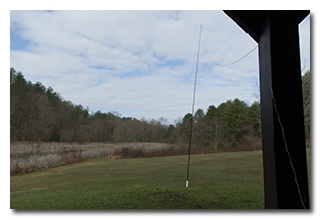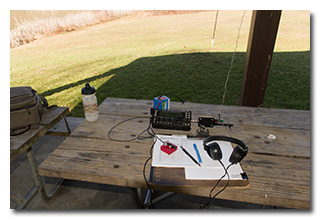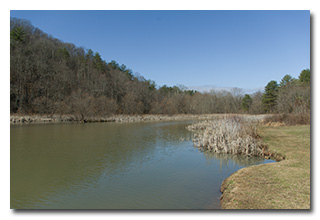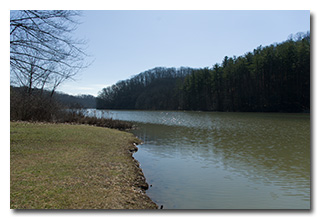
by William Eric McFadden
From the Strouds Run State Park website:
-
Several mounds and ancient fortifications were found in this area by early settlers telling us that the Adena Indians once lived here. In more recent history, this was home to the powerful Shawnee Nation until the Treaty of Greenville forced them to abandon their lands in southern Ohio.
The first European settlers arrived in the Athens County region in 1796. Two townships of land in the area had been apportioned by the Ohio Company in 1795 for the benefit of a university. The newly arrived pioneers were encouraged to settle on these college lands so as to make them attractive, productive and to form a fund for the institution.
This venture led to the founding of the town of Athens and Ohio University, the first college in the Northwest Territory. Settlers came by way of flatboats from Marietta down the Ohio and up the Hocking River to an attractive bluff where the town of Athens is now located.
With the discovery of rich coal fields in the area, Athens County soon developed into one of the leading coal producers in the state. The Hocking Canal and railroads provided easy means for shipping coal to distant markets. Clay tile, brick and salt were other industries that brought prosperity to the area.
The park derives its name from the Strouds family who settled in the area in the early 1800s. The land was purchased by the state for forest conservation purposes from 1948 to 1953. The dam creating Dow Lake was completed in 1960. The lake bears the name of C.L. Dow of Ohio University who was instrumental in initiating the project.
Pictures
- The view from Eric's operating location, with a view of the 28½' wire antenna and mast
- Eric's KX3 station
- Dow Lake: looking right | looking left
Description
On Sunday, March 3, 2024, one member of the Southeast Ohio Radio Adventure Team performed a successful activation of Strouds Run State Park (K-1994) as part of the Parks on the Air (POTA; link) program.
On an unseasonably warm early March morning, Eric McFadden, WD8RIF, succeeded in performing a quick POTA activation of Strouds Run State Park.
Eric arrived at the Bulldog shelter within Strouds Run State Park at 1442 UTC. After walking the little dogs Theo and Ginny, Eric chose a table within the picnic shelter, secured the dogs' leashes to the picnic table, and deployed his 28½' end-fed wire antenna as a sloper up to the top of his Goture Red Fox Super Hard 720 carbon-fiber mast held upright by a stake in the ground, and deployed three 17' counterpoise wires directly on the ground. Eric set up his KX3 on the picnic table and was on the air at 1500 UTC.
As expected, Eric found he had good cell-signal at this location and he would be able to spot himself on the POTA Spots website (link) and to use POTA Spots to identify possible Park-to-Park (P2P) QSOs.
Beginning his operation on 20m, Eric found himself a clear frequency to run, began calling "CQ POTA", hoping to be auto-spotted on POTA Spots. Eric's first QSO came 1501 UTC with W1AST in Massachusetts. This was followed at 1502 UTC by a QSO with N4KGL in Alabama. Then... nothing. Eric checked POTA Spots and discovered he hadn't been auto-spotted on POTA Spots. After spotting himself manually, Eric began calling "CQ POTA", and his next QSO came at 1506 UTC with K7UPJ in Florida. Thereafter, QSOs came quickly, with Eric's thirteenth QSO coming at 1516 UTC with N2EIM in New Jersey. This run included QSOs with operators located in Massachusetts, Alabama, Florida (2), Maine, New Hampshire (2), Illinois, Washington, New Jersey (2), Mississippi, and Idaho.
Switching to 40m, Eric found a clear frequency to run, began calling "CQ POTA, and was again not auto-spotted on POTA Spots. After manually spotting himself, Eric continued calling "CQ POTA" and his first QSO on 40m came at 1525 UTC with KB8PGW in Michigan. QSOs came quickly on 40m, with Eric's tenth QSO on the band coming at 1534 UTC with KG8HZ in Michigan. This run included QSOs with operators located in Michigan (2), Virginia (2), Indiana, North Carolina (2), Pennsylvania, Connecticut, and South Carolina.
Both the 20m and the 40m bands were productive for Eric, and the noise-floors were low. The main problem Eric experienced during his activation was little-dog Ginny's incessant barking which was, at times, so loud that Eric couldn't hear even his own keying. This is not the first time Ginny, an rescue-dog of old age, has caused Eric trouble during an activation. Ginny is, clearly, not a POTA pup. (In contrast, Theo, also a rescue dog, but not quite as old as Ginny, was well behaved and caused no real trouble during the operation.)
In all, Eric made twenty-three QSOs in thirty-four minutes of operating time. All of Eric's QSOs were CW and were made at five watts output.
Eric also submitted his log to the World Wide Flora and Fauna in Amateur Radio (WWFF; link) program for an operation at Strouds Run State Park, KFF-1994.
(return)



